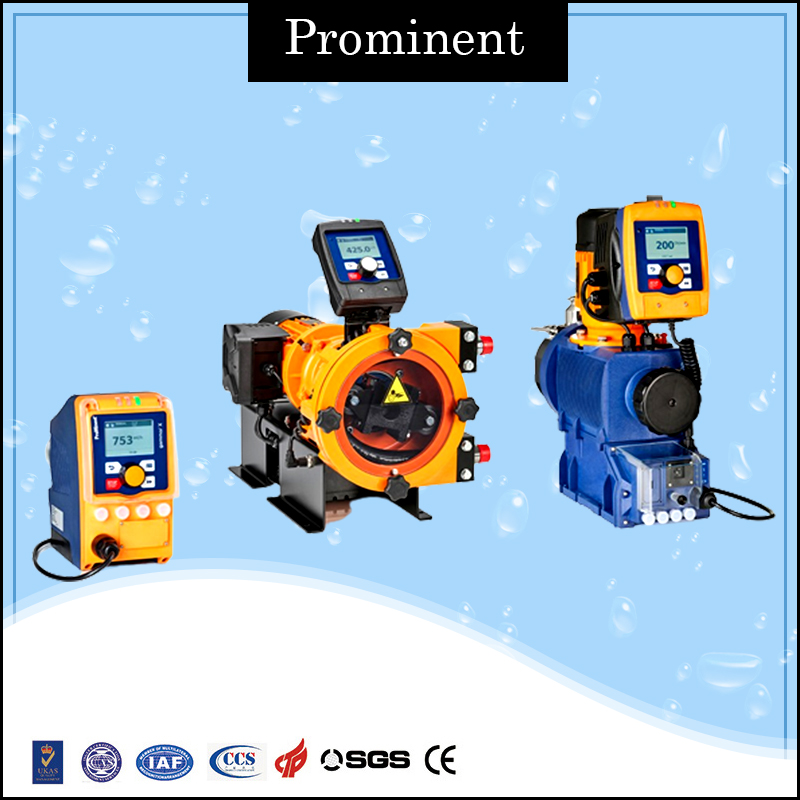
Dosing pumps play a crucial role in various industries, precisely delivering controlled amounts of liquids in diverse applications. Whether you’re working in chemical processing, water treatment, food and beverage production, or even aquariums, understanding these pumps is essential. This blog post serves as your comprehensive guide to dosing pumps, covering everything from their fundamentals to selection and maintenance.
What is a Dosing Pump?
Also known as a metering pump, it is a positive displacement pump specifically designed to accurately and precisely meter and transfer precise volumes of liquids. Unlike traditional centrifugal pumps, which rely on impeller rotation to create pressure, dosing pumps utilize various mechanisms like diaphragm, piston, or peristaltic to move a specific volume of liquid with each cycle. This controlled movement allows for consistent and reliable dosing, making them ideal for applications requiring precise chemical addition, sample extraction, or fluid transfer.
Here Are the Types of Dosing Pumps:
These proportional pumps come in various configurations, each suited for specific applications and offering unique advantages:
Diaphragm Pumps: These pumps utilize a flexible diaphragm actuated by a motor or solenoid to draw and discharge liquid. They are known for their gentle handling of delicate fluids, self-priming capabilities, and ability to handle viscous liquids.
Piston Pumps: Employing a reciprocating piston to move liquid, piston pumps offer high accuracy and pressure capabilities, making them suitable for high-pressure applications like chemical injection or fuel metering.
Plunger pumps: These dosing pumps use a piston to draw and discharge liquid. They are good for high-pressure applications and can handle viscous liquids.
Gear Pumps: Gear pumps use interlocking gears to pump fluid. They are known for their smooth, pulseless flow and are often used in applications requiring a constant flow rate.
Peristaltic Pumps: These pumps utilize a rotating roller mechanism that squeezes a flexible tube, creating suction and pushing the liquid forward. They excel in handling abrasive, corrosive, or shear-sensitive fluids due to minimal contact with the pump itself.
Lobe pumps: These pumps use two or more lobes that rotate to create a pumping action. They are good for high-flow applications and can handle viscous liquids.
Choosing the Right Dosing Pump:
Selecting the appropriate quantitative pump requires careful consideration of various factors:
Flow Rate: This refers to the volume of liquid the pump can deliver per unit time, typically measured in milliliters per hour (mL/h) or liters per hour (L/h). Choose a pump with a flow rate exceeding your application’s maximum requirement.
Pressure: The pump’s pressure rating determines its ability to overcome resistance in the system, like pipe friction or back pressure from the receiving vessel. Ensure the chosen pump has sufficient pressure to meet your application’s needs.
Chemical Compatibility: The pump’s wetted materials, which come into direct contact with the liquid, must be compatible with the specific chemicals being handled. Consider factors like corrosion resistance, temperature tolerance, and potential interactions with the liquid.
Accuracy: The level of precision required for your application is crucial. Most dosing pumps offer adjustable flow rates, but some models boast higher accuracy levels for critical applications.
Control Features: Depending on your needs, consider pumps with features like manual or automated controls, timers, alarms, or integration capabilities with process control systems.
Applications of Dosing Pumps:
The versatility of metering pumps makes them valuable tools across various industries, including:
Chemical Processing: Precisely metering chemicals for reactions, adding catalysts, or controlling pH levels.
Water Treatment: Dosing disinfectants, coagulants, flocculants, or other treatment chemicals accurately.
Food and Beverage Production: Metering ingredients, flavorings, or cleaning solutions during food and beverage processing.
Pharmaceutical Manufacturing: Dosing precise amounts of active ingredients or excipients during drug production.
Environmental Monitoring: Accurately extracting water samples for analysis or dosing specific chemicals for remediation purposes.
Aquariums: Maintaining precise levels of nutrients, medications, or other additives for optimal aquatic life conditions.
Installation and Maintenance Tips for Dosing Pumps
Proper installation and maintenance are crucial for ensuring optimal performance and longevity of your dosing pump. Here are some key points to remember:
- Follow the manufacturer’s instructions for installation, including proper connection to a power source, tubing, and the receiving vessel.
- Prime the pump if necessary, as per the manufacturer’s recommendations, to remove air from the system and ensure smooth operation.
- Calibrate the pump regularly to ensure it delivers the desired flow rate with accuracy.
- Clean and maintain the pump as per the manufacturer’s schedule, replacing worn-out parts like diaphragms or valves to prevent malfunctions.
Conclusion:
Dosing pumps are essential tools for precise and controlled liquid handling across various industries. Understanding their types, selection criteria, applications, and proper maintenance practices empowers you to choose the right pump for your specific needs and ensure its efficient and reliable operation. By following these guidelines, you can leverage the benefits of proportional pumps to achieve accurate and consistent results in your applications.
Frequently Asked Questions
Can dosing pumps handle hazardous chemicals?
Yes, some pumps are specifically designed for handling corrosive or hazardous liquids. Consult the manufacturer’s specifications and safety guidelines.
How long do dosing pumps typically last?
The lifespan of a metering pump depends on various factors like usage, maintenance, and type of liquid handled. Proper maintenance can significantly extend its lifespan.
Can dosing pumps handle corrosive or abrasive fluids?
Many quantitative pumps are designed to handle corrosive or abrasive fluids by using materials of construction such as stainless steel, PVC, or ceramic that are resistant to chemical attack. However, it’s important to select a pump that is specifically rated for the type of fluid being dosed to prevent damage and ensure reliable operation.
What maintenance is required for dosing pumps?
Maintenance requirements may include regular inspection of pump components, cleaning and replacing tubing or valves as needed, lubricating moving parts, checking and calibrating pump settings, and troubleshooting any issues that arise. It’s important to follow the manufacturer’s recommendations for maintenance to ensure optimal pump performance and longevity.








